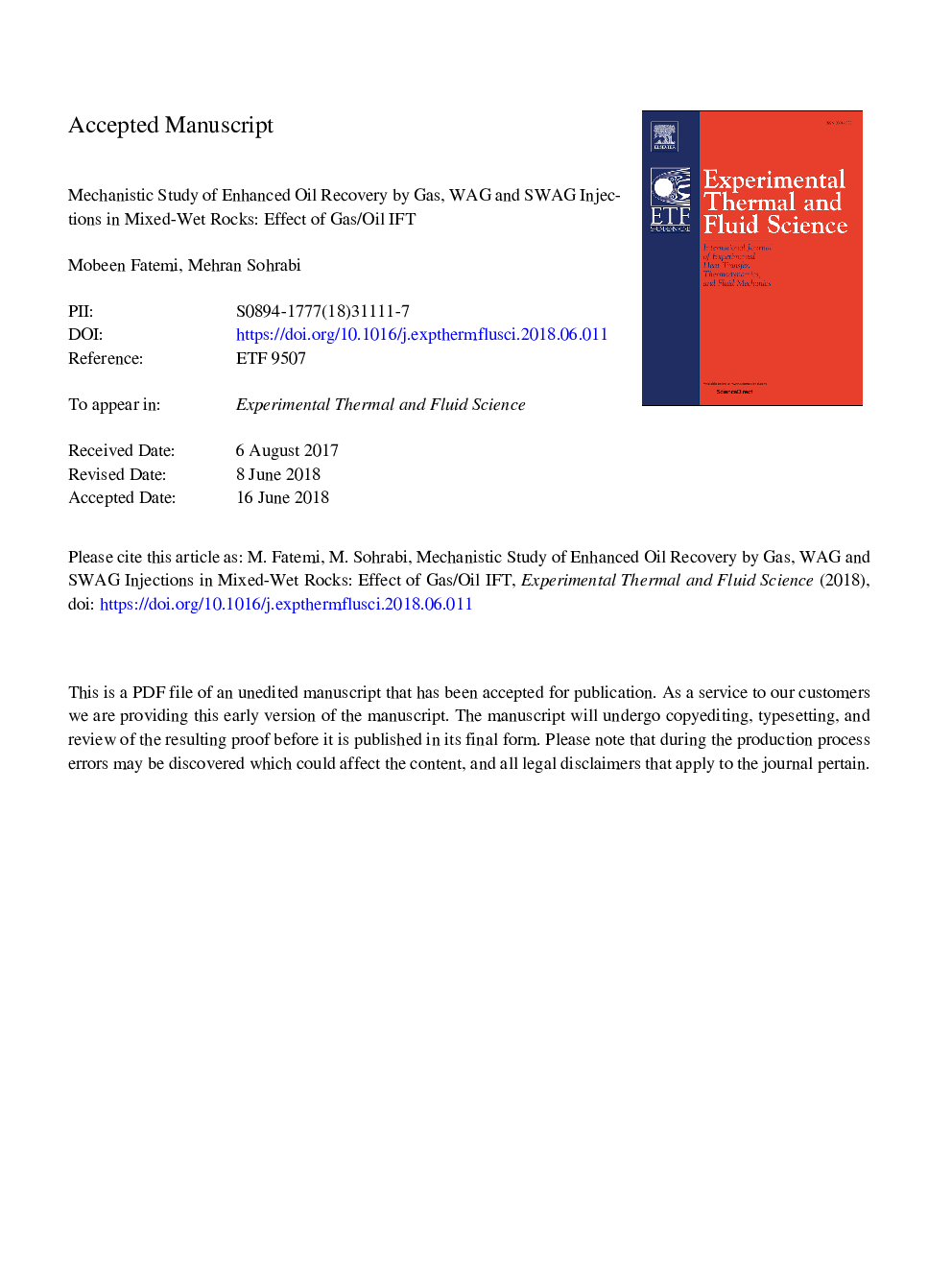| Article ID | Journal | Published Year | Pages | File Type |
|---|---|---|---|---|
| 7051548 | Experimental Thermal and Fluid Science | 2018 | 52 Pages |
Abstract
The results show that trapping models such as Land, Carlson, and Jerauld models cannot capture the observed trend of trapped gas saturations accurately, under the conditions of our experiments. This is especially true for the WAG-DIDIDIDI injection scenarios in which, contrary to the WAG-IDIDIDID injections, Sgtw values are not necessarily higher for the case with higher initial gas saturation. This shows the importance of developing new trapping models for non-water-wet systems. In addition, the results show that the reduction coefficient in Sor adjustment formula of the WAG-Hysteresis model (proposed by Larsen and Skauge) is a function of both gas/oil IFT and fluid injection sequence and it also depends on the rock permeability. These further highlight the importance of performing laboratory experiments under representative reservoir and operational conditions.
Keywords
Related Topics
Physical Sciences and Engineering
Chemical Engineering
Fluid Flow and Transfer Processes
Authors
Mobeen Fatemi, Mehran Sohrabi,
